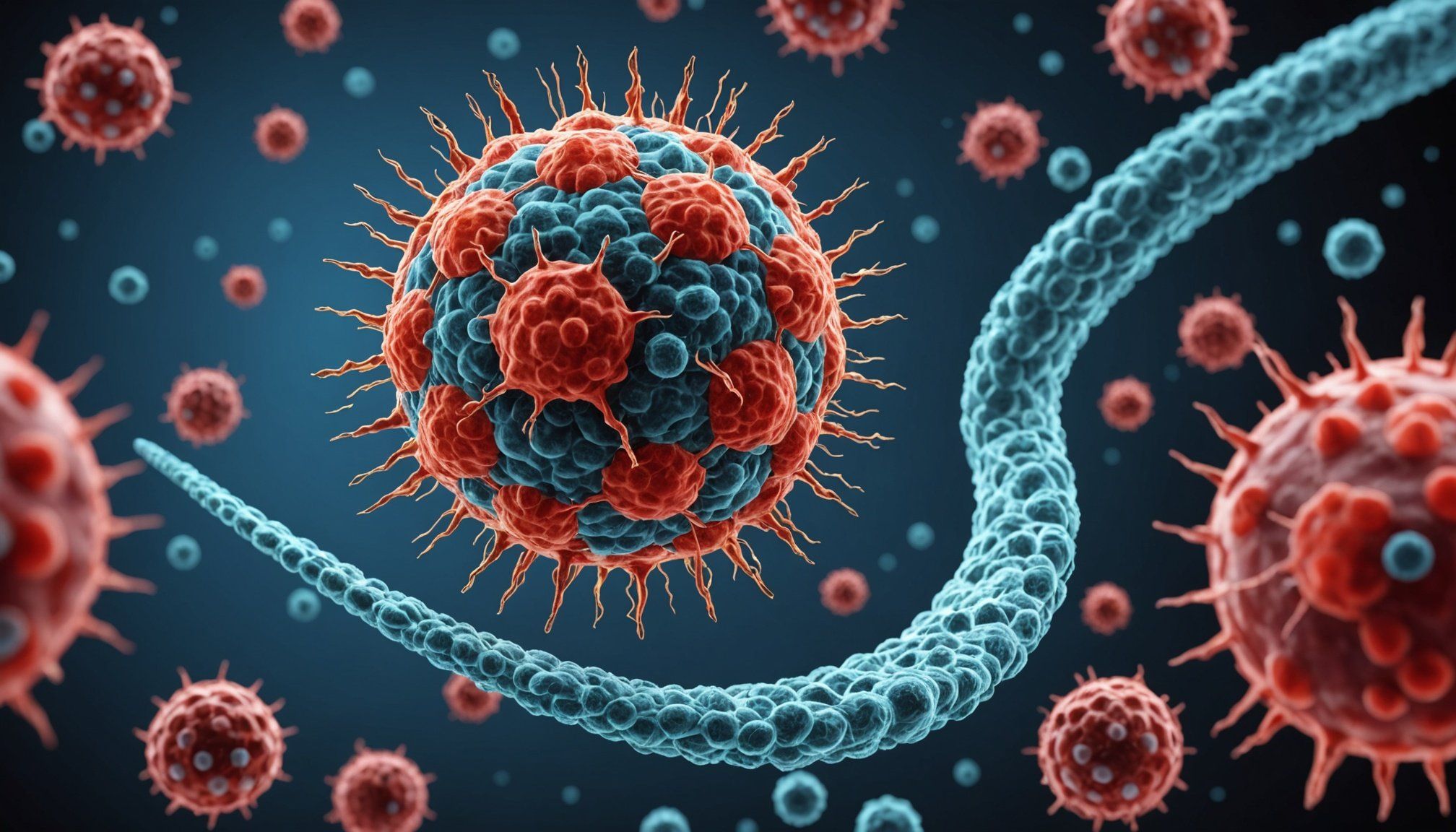Overview of Nanotechnology in Cancer Treatment
The advent of nanotechnology in medicine has revolutionised cancer treatment, particularly through innovative cancer drug delivery systems. Nanotechnology involves manipulating materials at the molecular scale to build devices with unique properties. In oncology, this approach allows for precise targeting of cancer cells, minimising damage to healthy tissue and enhancing the effectiveness of treatment.
Historically, cancer drug delivery systems faced challenges such as limited drug efficacy and significant side effects. However, the integration of nanotechnology has marked a pivotal development in this field. By utilising nanoparticles, drugs can be delivered directly to cancer cells, overcoming many limitations of conventional therapies.
In parallel : Harnessing blockchain technology: revolutionizing collaborative transactions in supply chain management
Current applications of nanotechnology in cancer therapy are vast and promising. Nanocarriers are employed to transport chemotherapy drugs, targeting tumours more accurately and reducing systemic toxicity. These advancements in cancer treatment not only improve patient outcomes but also pave the way for personalised medicine. Moreover, ongoing research continues to explore new applications and improve existing technologies, suggesting that nanotechnology will play an indispensable role in the future of cancer therapy. As these technologies advance, they offer significant promise in transforming traditional cancer treatment paradigms.
Recent Breakthroughs in Nanotechnology
The field of nanotechnology is witnessing significant progress, revolutionising methods in medicine, particularly in drug delivery and cancer research. These advancements promise to redefine treatments and improve health outcomes.
Also to read : How IoT Transforms Building Management: Unlocking Smarter, More Efficient Solutions
Key Research Studies
Recent studies have validated innovative nanotechnology approaches, showcasing their potential in drug delivery and target-specific treatments. A notable research publication highlighted how nanoparticles can be engineered to deliver drugs precisely, minimising side effects.
Promising Technologies
Emerging technologies are introducing novel materials that significantly enhance drug delivery techniques. For instance, researchers have developed nanoparticles that penetrate cancer cells effectively, paving the way for target-specific therapies.
Expert Opinions on Progress
Leading researchers emphasise the monumental potential of these innovations in nanotechnology. Experts highlight the dual impact: improving cancer research methodologies and enhancing the efficacy of conventional treatments. However, they also caution about the challenges ahead, particularly in safely integrating these technologies into clinical practices.
This ever-evolving field holds tremendous potential for the future, opening doors to breakthrough treatments and innovative medical solutions.
Mechanisms of Nanotechnology in Drug Delivery
In recent years, nanoparticle design has revolutionised the landscape of drug delivery, enhancing both bioavailability and therapeutic effectiveness. Through precise engineering, these nanoparticles can encapsulate drugs, protecting them from degradation until they reach their specific targets. This targeted therapy ensures drugs are delivered efficiently while maintaining their potency.
One of the core mechanisms of drug delivery using nanotechnology is the ability to penetrate biological barriers, such as the blood-brain barrier, a feat traditional methods often struggle with. This ability leads to minimised side effects as the drug is released exactly where it is needed, improving patient compliance and well-being.
Targeted delivery mechanisms also allow nanoparticles to home in on specific cells, reducing the collateral damage to healthy tissues often seen with conventional treatments. This specificity is crucial in cancer treatments, where traditional chemotherapy indiscriminately attacks both cancerous and healthy cells.
When comparing these two methodologies, traditional treatments lack the precision and reduced toxicity that nanotechnology offers. Overall, these advancements not only promise improved outcomes but also pave the way for more personalised medicine, aligning treatments more closely with individual patient profiles for better health care solutions.
Case Studies Demonstrating Success
Examining case studies in cancer treatment offers invaluable insights into the success of modern medical interventions. These detailed investigations showcase real-world applications, often transforming the lives of patients.
Case Study Analysis
Through the lens of success stories, we can observe innovative treatments achieving exceptional patient outcomes. Advanced therapies, particularly nanotechnology, have played a crucial role in achieving these positive results. By targeting cancer cells more accurately, these techniques enhance effectiveness and minimize side effects.
Patient Testimonials
First-hand accounts underscore the impact of these treatments on patient lives. Many patients report significant improvement in quality of life and increased survival rates following interventions that incorporate nanotechnology. These patient outcomes are testament to the transformative power of cutting-edge medical research and application.
Statistical Outcomes
Quantitative data fortifies these success stories, with statistical analyses revealing enhanced patient outcomes. Studies indicate substantial improvements in survival rates and overall quality of life among those receiving such treatments. The numbers provide concrete evidence, supporting the optimism expressed in personal testimonials. This convergence of statistics and narrative not only validates the efficacy of new treatments but also fosters hope for future advancements in cancer care.
Implications for Future Cancer Therapies
Exploring the future of cancer treatment, nanotechnology presents transformative possibilities. By integrating nanotech with traditional therapies such as chemotherapy and radiation, it’s possible to boost efficacy and reduce side effects. One exciting potential lies in targeted drug delivery, where nanoparticles carry medication directly to cancer cells, sparing healthy tissue.
However, alongside these innovations come ethical considerations. As we develop more complex treatments, we must grapple with issues of accessibility and safety. Who gets access to these innovative therapies? How do we ensure these treatments do not lead to unforeseen health issues?
The road to commercialization also faces obstacles. Regulatory pathways play a critical role in ensuring new nanotech drugs meet safety and efficacy standards. Agencies like the FDA are tasked with adapting existing regulations to encompass these cutting-edge technologies. This process can be lengthy and costly, impacting how quickly patients can benefit from these advancements.
It’s crucial for ongoing dialogue between scientists, ethicists, and regulators to navigate these challenges and maximize the implications of nanotech in cancer therapies. Embracing these conversations will ensure we don’t just innovate in treatment efficacy but do so ethically and responsibly.
Conclusion on the State of Nanotechnology in Cancer Treatment
Nanotechnology has emerged as a revolutionary force in cancer treatment, providing innovative solutions to complex challenges. Its role in enhancing precision oncology cannot be overstated, as it allows for targeted delivery of treatments with minimal side effects. The advancements witnessed in recent years have opened new avenues for research and application.
The outlook on nanotechnology is promising, with ongoing research and development trajectories indicating exciting possibilities. As scientists continue to explore nanotechnology, they focus on overcoming current limitations, such as ensuring safety and scalability of treatments. This emerging field encourages collaboration among researchers, clinicians, and stakeholders to realise its full potential.
Looking towards the future, nanotechnology holds the promise to dramatically transform oncology care. By fostering continuous innovation and supporting interdisciplinary projects, the medical community can facilitate breakthroughs in treatment modalities. Enthusiasm for further advancements should encourage stakeholders to engage actively with such cutting-edge technologies.
In sum, the state of nanotechnology in cancer treatment reflects a dynamic intersection of scientific progress and therapeutic potential. Embracing emerging technologies and supporting their development are key to addressing the evolving needs of oncology and improving patient outcomes.









